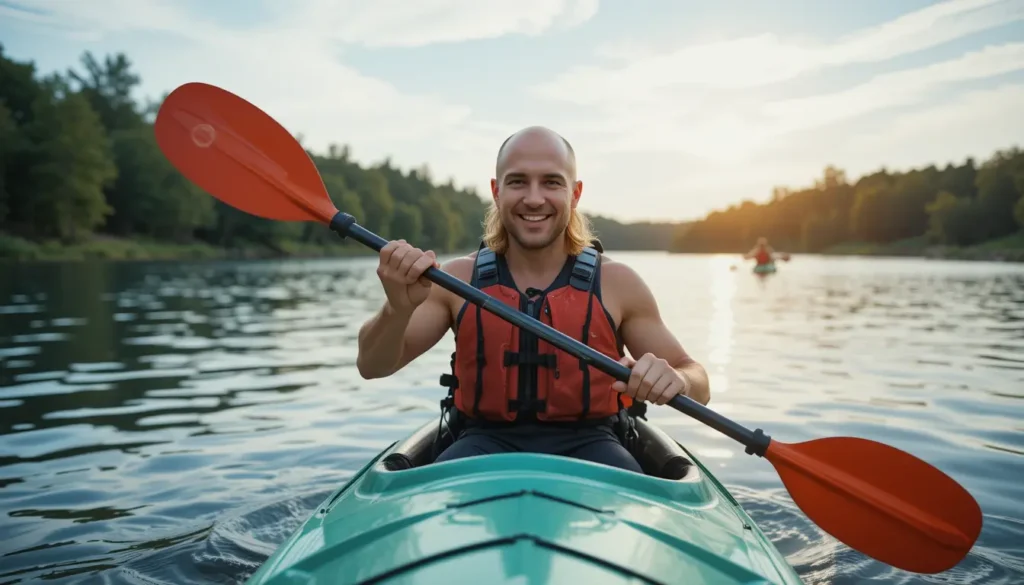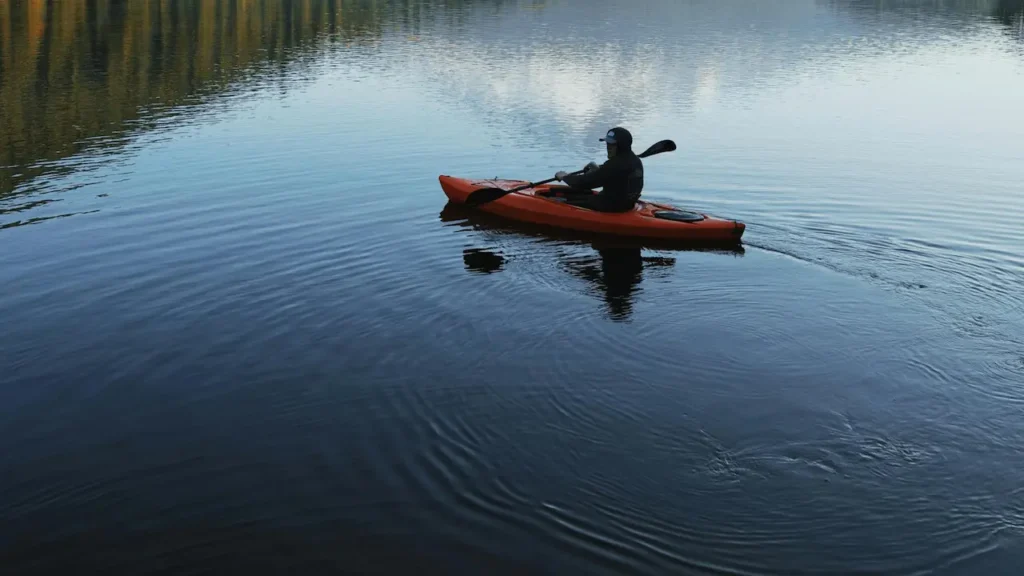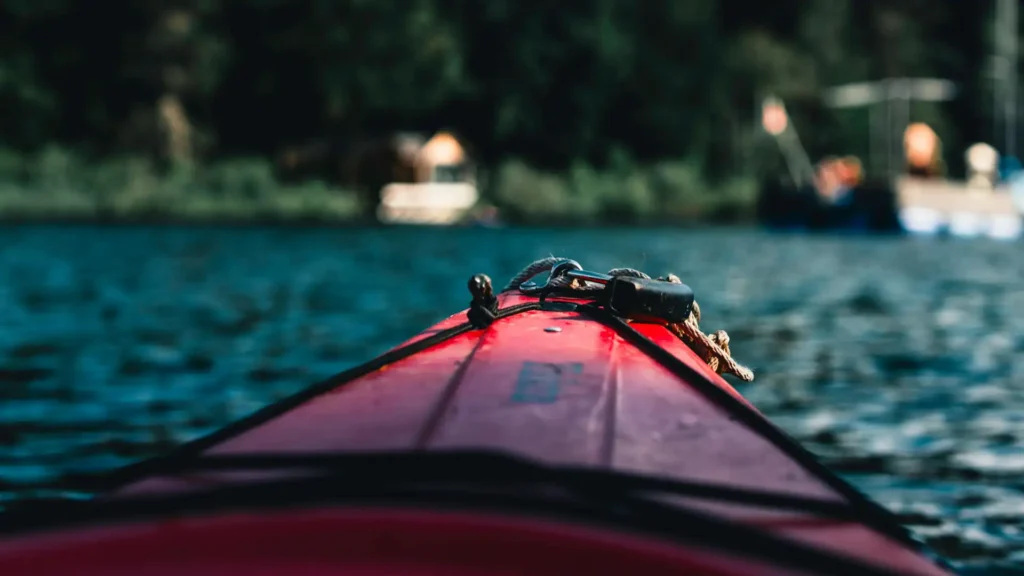You don’t need to be rich to kayak down a river. You just need a plan that saves money in the right places. Most people skip kayaking because they think it’s expensive. They’re wrong—and I’m going to prove it.
If you love nature, peace, and water, kayaking gives you all three at once. But many quit before they start because of gear prices, travel costs, or fear of not doing it “right.” That’s where this guide comes in. I’ll show you how to plan a complete kayaking trip without draining your bank account.
This isn’t a list of discounts or deals. This is about building a system that works for any budget. From picking the right spot to packing gear, we’ll break everything down into clear steps.
Start With the Water
Most people mess up the first step—they focus on gear before picking a place. That’s backwards. Your trip should begin with water, not with what you buy.
You don’t need to fly across the country or rent a cabin to enjoy kayaking. Start local. Find somewhere close—within one or two hours from where you live. That cuts travel costs and lets you test the experience without a big commitment.
Use free tools. Google Maps shows nearby lakes and rivers. Zoom in on the blue areas near you and search terms like “public kayak launch,” “free access lake,” or “city park with paddling.” Paddling apps such as Go Paddling, Paddle Map, or RiverApp give more details. These apps often include maps, launch points, hazards, and notes from other kayakers.
Stick to calm water if you’re new or on a tight budget. Flatwater means lakes, slow rivers, or protected bays. These areas are easier to paddle and usually have free or low-cost access. Avoid fast rivers, tides, or areas without clear entry points unless you’ve planned for them.
Look for public parks, state recreation areas, or wildlife reserves. These are great for budget trips because they usually charge less than private areas. Some don’t charge at all. Parking may be free. You may find toilets, water refill stations, or shaded rest stops—all without spending extra.
Don’t trust ads. Don’t rely on polished travel blogs either. They’re written to sell an image, not to help you budget. Instead, go to Google Reviews, paddling forums, or local Facebook groups. See what people say about the water level, parking, crowds, and fees.
You want the full picture—Is the parking lot small? Are launch spots muddy or steep? Does the water smell bad in summer? Are there hidden rocks or branches that can damage your kayak?
Find all that before you go. You’ll save time, fuel, and frustration.
Once you lock in your spot, work backward. Figure out how long you want to paddle. One hour? Half a day? Overnight? Short routes mean lighter gear. Long trips may need dry bags, food, and water planning. This is where real budgeting starts.
Also check the shape of the water body. Is it a loop? Do you return to the same place you launched from? Or do you finish miles downstream? A loop or out-and-back route is easier to manage. One-way routes can cost more unless you have a second car or shuttle help.
Does the area have campgrounds? Restrooms? Clean water access? All of this helps you prep smarter and avoid last-minute costs.
When you start with the water first, everything else becomes simpler and cheaper. You build your plan around the place, not your shopping list. And that’s how budget kayaking works.
Get Gear Without Buying It
A full kayak setup can cost hundreds. But here’s a truth no one tells you—most people only kayak two or three times a year. You don’t need to own gear to enjoy the sport.
Rent first. Many state parks, outdoor centers, or small shops rent gear for cheap. Weekday rates are lower. Some places offer package deals—kayak, paddle, and life vest together.
If you want to go cheaper or go longer, join a local paddling group. These groups are found on Facebook, Meetup, or community boards. Many members lend gear for free or low cost. Some organize shared trips where gear is provided.
Another option—used gear. Check Craigslist, Facebook Marketplace, or local gear swaps. You’ll find kayaks under $200 and paddles under $30. Before buying, always ask: Is it stable? Is it cracked? Does it float straight?
Also, skip high-end extras. You don’t need a carbon fiber paddle. A basic one works. Wear water shoes or old sneakers. Use a dry bag from a dollar store. Budget gear works if you plan smart.
Cut Travel Costs With Smart Planning
Getting to the water can cost more than being on it. So reduce gas, tolls, and time with these tricks.
Pick a location less than two hours from home. This saves on fuel and lets you avoid hotel costs. You can paddle, eat, and return in one day.
Want to stay overnight? Camp instead of booking a hotel. Campgrounds near paddling spots are cheaper and usually have showers and restrooms. Some allow free dispersed camping if you’re in national forests or on public land.
Split costs with friends. Kayaking is better with company, and group trips lower the cost per person. Share gas. Share snacks. Share gear.
Pack your own meals. Bring sandwiches, fruit, snacks, and water. Skip restaurants. You’ll save money and eat faster.
Plan your trip during off-days. Weekdays mean fewer people, cheaper rentals, and more quiet. That’s more value without more money.
Plan the Route With Zero Surprises
Surprises cost money. Lost time, extra parking fees, and bad weather all eat your budget. So lock in your route early.
Use free navigation tools made for paddlers. PaddlePlanner, RiverApp, and Avenza Maps show current, depth, and launch points. Most rivers have detailed trip logs shared by kayakers online.
Pick a route with simple access—start and end at the same point or use a short loop. Avoid long one-way trips unless you have a shuttle. Paying someone to move your car can cost more than the kayak.
Check water flow and weather. Rivers change daily. A low river means dragging your boat. A fast one can be dangerous. Use the U.S. Geological Survey site to check river levels for free.
Look for free parking and free access. Many areas charge for launch fees or day passes. Read the rules before you go. Print a map, mark emergency exits, and know where rest stops are.
Always bring a paper copy of your plan. Phones die. Apps fail. A small map in a dry bag keeps your trip on track.
Once you’ve done one trip, repeat it smarter. Here are tricks I’ve used on dozens of low-cost trips.
Use reusable gear. Water bottles, containers, bags, and rope—bring them back every time. Don’t buy new.
Track your costs. After your first trip, make a budget log. Know what you spent on gas, gear, food, and access. Use that to plan your next trip better.
Don’t fall for upgrades. You don’t need a GoPro. You don’t need waterproof speakers. You don’t need fancy hydration packs. Focus on comfort and safety.
Avoid rush. Rushing causes mistakes. Forgetting sunscreen, paying for parking because you didn’t look around, or leaving gear behind—these are budget-killers. Stay slow, stay sharp.
Check local laws. Some places need permits. Others have rules on life jackets. Break a rule and you pay a fine. Read the signs before you paddle.
Bring repair basics. Duct tape, zip ties, and a small multitool can fix 90% of problems on the water. No repair kit means a broken paddle ends your day—or your trip.
Make a habit of checking weather and wind every morning before launch. Wind can make flat water feel like a storm. You don’t want to paddle against it.
The Truth Most Kayakers Don’t Say Out Loud
Here’s the part no one says: Most “fancy” kayaking trips aren’t better than budget ones. In fact, the simple ones usually feel more real.
When you cut away costs, you start to pay attention to things that matter. The sound of your paddle. The movement of the water. The way your arms burn after a few miles. That’s the real experience.
Luxury doesn’t make a river better. Budget doesn’t make it worse. A clear plan, a smart route, and the right attitude do more than any new kayak ever could.
You don’t need a lot of money to be part of this world. You need a decision. A step. A paddle stroke.
Now you know how to plan a kayaking trip on a budget.
Start by finding the right place. Build your gear plan around that place. Keep travel short and cheap. Plan your route carefully. Use simple tricks to avoid extra spending. And most of all—remember the real goal: to paddle.
Write down what worked and what didn’t after each trip. That’s your personal system. Over time, you’ll get better, faster, and cheaper at it.
This isn’t a one-time guide. It’s a skill you grow. And every time you use it, you prove one thing—adventure doesn’t belong to people with money. It belongs to people who plan.



